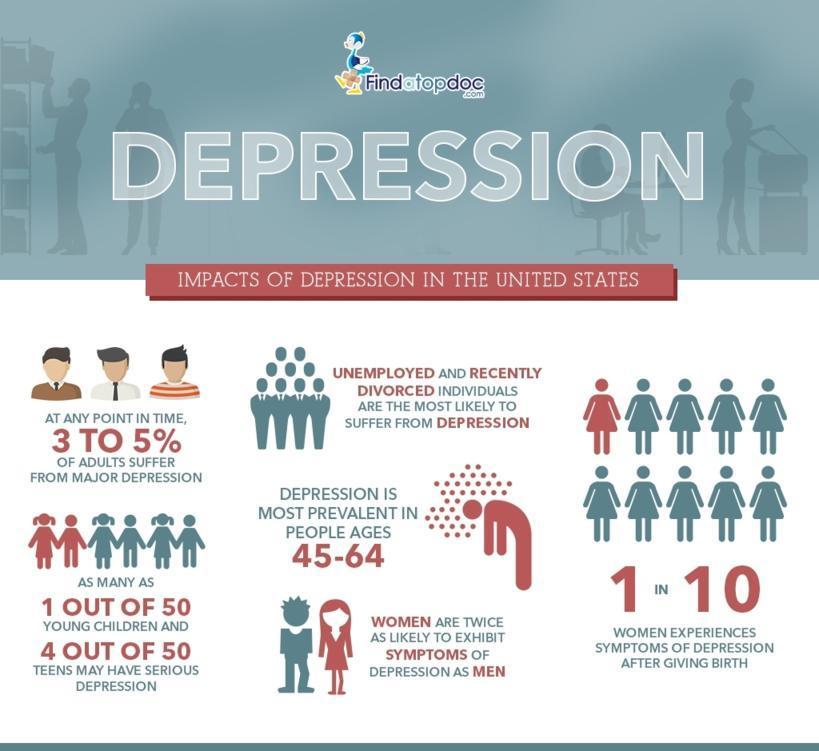
Impacts Of Depression in United States
Sadness and grief are normal human emotions. We all have those feelings from time to time, but they usually go away within a few days. Major depression is something more. It’s a period of overwhelming sadness. It involves a loss of interest in things that used to bring pleasure. Those feelings are usually accompanied by other emotional and physical symptoms. Untreated, depression can lead to serious complications that put your life at risk. Fortunately, most people can be effectively treated.
What are the Types of Depression
You can have a single bout of major depression or you can have recurring episodes. When depression lasts two years or more, it is called persistent depressive disorder. A less common type of depression is called bipolar disorder, or manic-depressive illness. Bipolar disorder involves cycles of depression alternating with extreme highs, or manias. Specific circumstances can trigger other forms of depression. If you have seasonal affective disorder (SAD), your mood is affected by sunlight. You’re more likely to be depressed during winter, when there’s less sun. When major depression or bipolar disorder are accompanied by hallucinations, delusions, or paranoia, it’s called psychotic depression. About 20 percent of people with major depressive disorder develop psychotic symptoms, according to the National Alliance on Mental Illness (NAMI).
Prevalence
The NIMH estimates that in the United States, 16 million adults had at least one major depressive episode in 2012. That’s 6.9 percent of the population. According to the World Health Organization (WHO), 350 million people worldwide suffer from depression. It is a leading cause of disability. Data from the National Survey on Drug Use and Health highlights the problem among young adults. From 2008 to 2010, more than 8 percent of young adults between the ages of 18 and 22 reported a major depressive episode in the previous year. When it comes to gender, women are more likely to be diagnosed with depression than men.
What are the Symptoms of Depression
Feelings of sadness or emptiness that don’t go away within a few weeks may be a sign of depression. Other emotional symptoms include:
- extreme irritability over minor things
- anxiety and restlessness
- anger management issues
- loss of interest in favorite activities
- fixation on the past or on things that have gone wrong
- thoughts of death or suicide
Physical symptoms include:
- insomnia or sleeping too much
- debilitating fatigue
- increased or decreased appetite
- weight gain or weight loss
- difficulty concentrating or making decisions
- unexplained aches and pains
How to treat Depression
Clinical depression is treatable. The most common methods are antidepressant medication and psychological counseling. Most of the time, a combination of both is recommended. It’s important to note that antidepressant medications may take several months to work. In many cases, a long-term approach is best.
If you, or someone you know has symptoms of depression, take it seriously. Make an appointment with a doctor if symptoms last more than a few weeks. It’s important to report all symptoms. A physical examination and blood tests can rule out health problems that can contribute to depression. Make sure to notice the symptoms on time and seek help!


